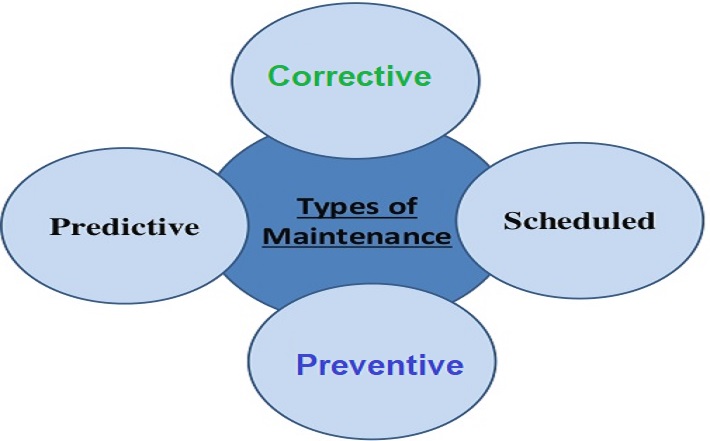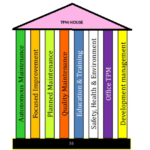Maintenance is activity or work that is carried out and necessary to preserve an asset including building and equipment’s. Maintenance work enables continued use and function, above a minimum acceptable level of performance, over its design service life, without unforeseen renewal or major repair activities
Maintenance management serves to protect the owners’ real estate investment in a number of ways that includes:
Physical Integrity: To keep the machines and other assets in good working order so as to minimize disruptions and downtimes.
Risk Management: To keep the assets in a state of good repair for the owners’ and tenants health and safety.
Aesthetic Preservation: To keep the assets from deteriorating in appearance and becoming unsightly.
Responsible Stewardship: To ensure that the assets achieve their full potential service life.
Duty of Care: To satisfy a legislated duty that is owed to owners, occupants and guest on the property.
Duty to Mitigate: To prevent unnecessary damage to assets that may result in their premature failure.
Major Types Of Maintenance
There are different types of maintenance activities.
- Breakdown maintenance
- Preventive maintenance that covers periodic maintenance, predictive maintenance and condition monitoring
- Corrective maintenance
Now lets learn more about all these types of maintenance work.
Break Down Maintenance
This is an approach in which people wait until equipment fails and then repair it. This can be one way of doing work when the equipment failure does not significantly affect the operation or production or generate any significant loss other than repair cost.
Preventive maintenance
It is a daily or routine maintenance activity that may include cleaning, inspection, oiling and re-tightening etc.
Just like human life is extended by preventive medicine, the asset or equipment service life can be prolonged by doing preventive maintenance.
Preventive maintenance helps to retain the healthy condition of equipment and prevent failure through:
- the prevention of deterioration,
- periodic inspection or
- equipment condition diagnosis,
- measure deterioration impact
This type of maintenance is further divided into periodic maintenance and predictive maintenance.
Periodic maintenance or time based maintenance consists of periodically inspecting, servicing and cleaning equipment and replacing parts to prevent sudden failure and process problems.
Predictive maintenance is a method in which the service life of important part is predicted based on inspection or diagnosis, in order to use the parts to the limit of their service life.
Compared to periodic maintenance, predictive maintenance is condition based maintenance. It manages trend values, by measuring and analyzing data about deterioration.
Condition Monitoring
Condition monitoring is the process of determining the condition of machinery while in operation.
The key to a successful condition monitoring programme includes:
1. Knowing what to listen or inspect for
2. How to interpret the collected information
3. When to use this knowledge
Successfully using this programme enables the repair of problem components prior to their failure.
Condition monitoring not only helps plant personnel reduce the possibility of catastrophic failure, but also allows them to order parts in advance, schedule manpower, and plan other repairs during the downtime.
Corrective Maintenance
This type of maintenance improves equipment and its components so that preventive maintenance can be carried out reliably. Equipment with design weakness must be redesigned to improve reliability or improving maintainability
Advantages and disadvantages of Break Down Maintenance
Advantages
- Lower start up cost
- Limited personnel requirement
- Reduced maintenance costs
- Potentially increased margins
Disadvantages
- Unpredictability
- Equipment not maximized
- Indirect costs
Preventive Maintenance Advantages
- Over all very cost effective
- Flexibility can allow for adjustment of schedule to accommodate other work
- Increased equipment life
- Saved energy cost resulting from equipment running from pick efficiency
- Reduced equipment or process failure
- Over all saving between 12% to 18%
Preventive Maintenance Disadvantages
- Catastrophic failure still a risk
- Performance of maintenance based on schedule not required
- Risk of damage when conducting unneeded maintenance
- Labour Intensive
- Saving not readily visible without a base line
Predictive Maintenance Advantages & Disadvantages
Advantages:
Increased component operational life/availability
Allows for pre-emptive corrective action
Decreased part and labor cost
Improved safety and environment
Energy savings
Over all saving between 8% to 12% over preventive maintenance
Disadvantages:
Increased investment of diagnostic equipment
Increased staff training for analyzing data
Saving not readily visible without a baseline/history
Advantages and Disadvantages of Condition Monitoring
Extend bearing service life
Maximize machine productivity
Minimize unscheduled downtime
Safely extend overhaul intervals
Improve repair time
Increased machine life Improve product quality
Reduce product cost
Enhance product safety
Disadvantages of Condition Monitoring
Monitoring equipment costs
Operational costs (running the maintenance program)
Skilled personnel needed
Strong management commitment needed.
A significant run-in time to collect machine histories and trends is usually needed.
Corrective Maintenance Advantages and Disadvantages
Advantages
Lower short-term costs
Requires less staff since less work is being done
Disadvantages
Increased long-term costs due to unplanned equipment downtime.
Possible secondary equipment or process damage.
Prone to neglect of some assets


